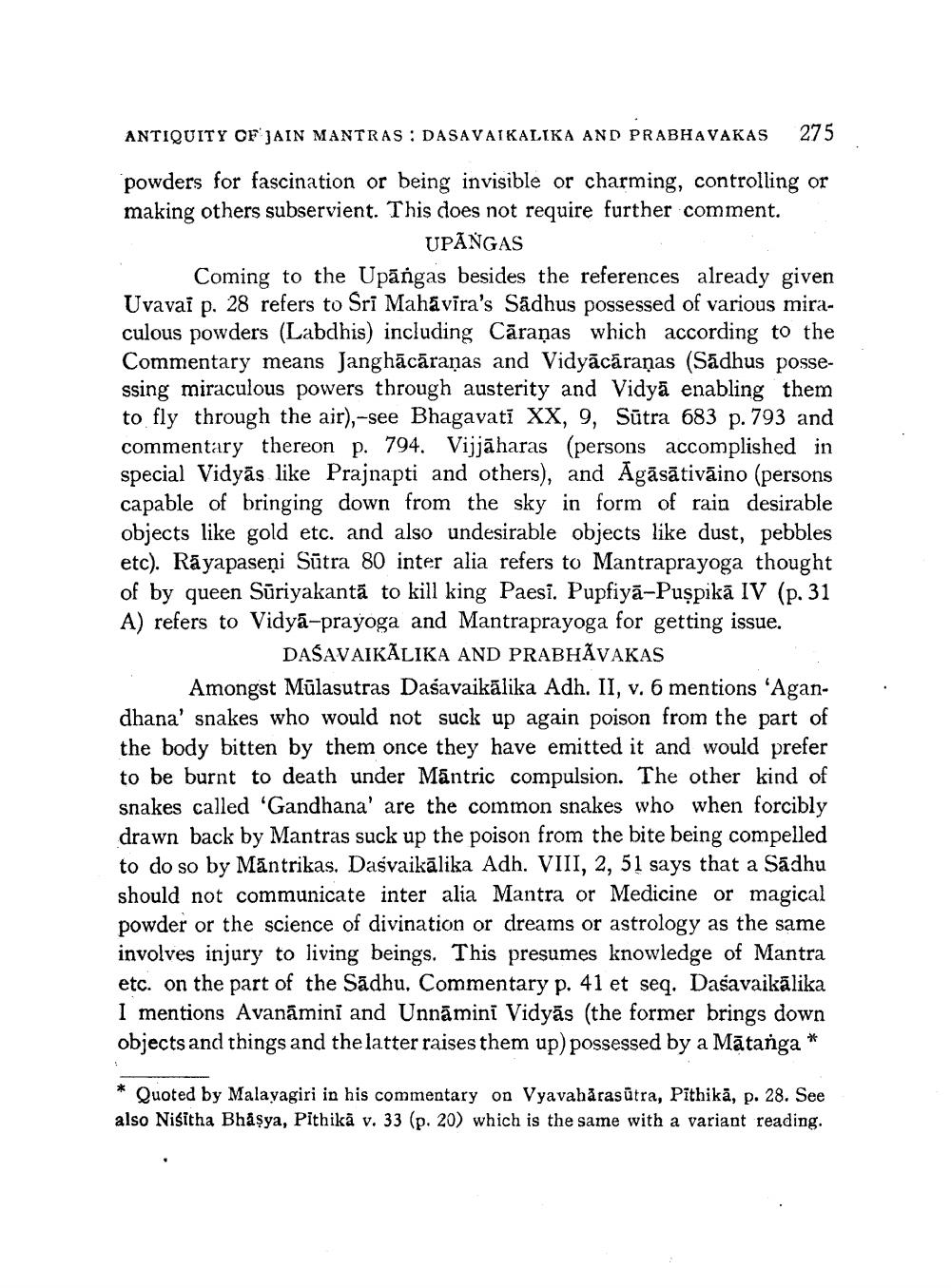________________
ANTIQUITY OF JAIN MANTRAS : DASAVAIKALIKA AND PRABHAVAKAS
275
powders for fascination or being invisible or charming, controlling or making others subservient. This does not require further comment.
UPANGAS Coming to the Upāngas besides the references already given Uvavai p. 28 refers to Sri Mahavira's Sadhus possessed of various miraculous powders (Labdhis) including Cāraņas which according to the Commentary means Janghācāranas and Vidyācārañas (Sadhus possessing miraculous powers through austerity and Vidyā enabling them to fly through the air), -see Bhagavati XX, 9, Sūtra 683 p. 793 and commentary thereon p. 794. Vijjāharas (persons accomplished in special Vidyās like Prajnapti and others), and Agāsātivāino (persons capable of bringing down from the sky in form of rain desirable objects like gold etc. and also undesirable objects like dust, pebbles etc). Rāyapaseņi Sūtra 80 inter alia refers to Mantraprayoga thought of by queen Suriyakantā to kill king Paesi. Pupfiyā-Puspikā IV (p. 31 A) refers to Vidyā-prayoga and Mantraprayoga for getting issue.
DASAVAIKĀLIKA AND PRABHÃVAKAS Amongst Mūlasutras Dasavaikālika Adh. II, v. 6 mentions 'Agandhana' snakes who would not suck up again poison from the part of the body bitten by them once they have emitted it and would prefer to be burnt to death under Mantric compulsion. The other kind of snakes called 'Gandhana' are the common snakes who when forcibly drawn back by Mantras suck up the poison from the bite being compelled to do so by Mäntrikas. Dasvaikālika Adh. VIII, 2, 51 says that a Sadhu should not communicate inter alia Mantra or Medicine or magical powder or the science of divination or dreams or astrology as the same involves injury to living beings. This presumes knowledge of Mantra etc. on the part of the Sadhu, Commentary p. 41 et seg. Dasavaikālika I mentions Avanāmini and Unnāmini Vidyās (the former brings down objects and things and the latter raises them up) possessed by a Mātanga *
* Quoted by Malayagiri in his commentary on Vyavahārasūtra, Pithikā, p. 28. See also Nisitha Bhåşya, Pithikā v. 33 (p. 20) which is the same with a variant reading.




